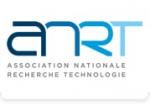Modélisation expérimentale d’un anévrisme aortique et étude des endofuites//Experimental Modeling of an Aortic Aneurysm
| ABG-134071 | Master internship | 6 months | 650€ |
| 2025-10-28 |
- Physics
- Biotechnology
Employer organisation
Website :
Le Laas est un laboratoire de recherche académique du CNRS. Il inclus plus de 500 chercheurs sur l'ingénieurie des systèmes.
Nanomade est une entreprise innovante qui conçoit et commercialise des capteurs de déformation destinés à un large éventail de secteurs industriels,
Description
English below
======================
Lieu : LAAS-CNRS Toulouse
Durée : 6 mois
Niveau : Stage de fin d’études (ingénieur ou Master 2)
Contexte
Les anévrismes de l’aorte abdominale représentent une pathologie grave pouvant entraîner une rupture fatale en l’absence de traitement. Deux approches thérapeutiques principales existent. La chirurgie ouverte consiste à remplacer la portion d’aorte dilatée par une prothèse synthétiqu. La technique EVAR (EndoVascular Aneurysm Repair) repose sur une endoprothèse implantée par voie endovasculaire afin d’isoler l’anévrisme du flux sanguin.
Bien que l’EVAR soit une méthode mini-invasive, elle présente un risque non négligeable d’endofuites, c’est-à-dire de persistance d’un flux sanguin dans la poche anévrismale. Le suivi post-opératoire de ces endofuites reste aujourd’hui complexe et constitue un enjeu clinique majeur. Le but du projet qui débute est de dévelloper un capteur implantable pouvant détécter de manière précise et anticipé ces endofuites et réduire les risques de rupture de l’aorte.
Objectif du stage
Dans le cadre d’une collaboration entre le LAAS-CNRS et le service d’angiologie du CHU de Toulouse, le stagiaire contribuera au développement d’un modèle expérimental d’aorte en silicone reproduisant les conditions physiologiques.
Le travail consistera à :
- finaliser la fabrication d’un modèle d’aorte en silicone ;
- implanter une endoprothèse dans le modèle ;
- intégrer différents capteurs (pression, débit, etc.) pour la mesure du flux sanguin simulé ;
- caractériser expérimentalement l’effet de différentes configurations d’endofuites sur les paramètres hydrodynamiques.
Profil recherché
- Étudiant(e) en école d’ingénieur ou Master 2, spécialité physique appliquée, instrumentation, biomécanique ou génie biomédical ;
- Bonnes connaissances en mécanique des fluides et/ou en intégration de capteurs ;
- Intérêt marqué pour le travail expérimental;
- Goût pour le travail en collaboration interdisciplinaire, notamment avec des clinicien
======================
Location: LAAS-CNRS, Toulouse
Duration: 6 months
Level: Final-year internship (Engineering or Master’s degree)
Context
Abdominal aortic aneurysms represent a severe pathology that can lead to fatal rupture if left untreated. Two main therapeutic approaches exist:
- Open surgery, which involves replacing the dilated portion of the aorta with a synthetic graft;
- EVAR (EndoVascular Aneurysm Repair), which consists in implanting an endograft via an endovascular approach to isolate the aneurysm from blood flow.
Although EVAR is a minimally invasive technique, it presents a significant risk of endoleaks, i.e., persistent blood flow within the aneurysmal sac. Postoperative monitoring of these endoleaks remains challenging and represents a major clinical issue.
The goal of the ongoing project is to develop an implantable sensor capable of accurately and proactively detecting endoleaks, in order to reduce the risk of aortic rupture.
Internship Objectives
As part of a collaboration between LAAS-CNRS and the Angiology Department of Toulouse University Hospital (CHU Toulouse), the intern will contribute to the development of an experimental silicone aorta model reproducing physiological conditions.
The work will involve:
- Finalizing the fabrication of the silicone aorta model;
- Implanting an endograft within the model;
- Integrating various sensors (pressure, flow rate, etc.) to measure the simulated blood flow;
- Experimentally characterizing the effects of different endoleak configurations on hydrodynamic parameters.
Desired Profile
- Engineering or Master’s student specializing in applied physics, instrumentation, biomechanics, or biomedical engineering;
- Solid knowledge of fluid mechanics and/or sensor integration;
- Strong interest in experimental work;
- Motivation for interdisciplinary collaboration, particularly with clinicians.
Profile
Profil recherché
- Étudiant(e) en école d’ingénieur ou Master 2, spécialité physique appliquée, instrumentation, biomécanique ou génie biomédical ;
- Bonnes connaissances en mécanique des fluides et/ou en intégration de capteurs ;
- Intérêt marqué pour le travail expérimental;
- Goût pour le travail en collaboration interdisciplinaire, notamment avec des clinicien
Starting date
Vous avez déjà un compte ?
Nouvel utilisateur ?
Get ABG’s monthly newsletters including news, job offers, grants & fellowships and a selection of relevant events…
Discover our members
 Aérocentre, Pôle d'excellence régional
Aérocentre, Pôle d'excellence régional  Laboratoire National de Métrologie et d'Essais - LNE
Laboratoire National de Métrologie et d'Essais - LNE  Institut Sup'biotech de Paris
Institut Sup'biotech de Paris  TotalEnergies
TotalEnergies  SUEZ
SUEZ  Généthon
Généthon  Tecknowmetrix
Tecknowmetrix  Medicen Paris Region
Medicen Paris Region  ADEME
ADEME  Nantes Université
Nantes Université  ANRT
ANRT  Servier
Servier  Groupe AFNOR - Association française de normalisation
Groupe AFNOR - Association française de normalisation  Ifremer
Ifremer  ASNR - Autorité de sûreté nucléaire et de radioprotection - Siège
ASNR - Autorité de sûreté nucléaire et de radioprotection - Siège  Nokia Bell Labs France
Nokia Bell Labs France  ONERA - The French Aerospace Lab
ONERA - The French Aerospace Lab
-
Thesis topicRef. 134820Varennes, CanadaDaniel Guay
Électrolyse de l'eau : performances et dégradation des électrolyseurs membranaires en conditions dynamiques d'opération
Scientific expertises :Energy - Chemistry - Materials science
-
JobRef. 134689, Nouvelle Aquitaine , FranceUGIEL
Ingénieur de Recherche Matériaux (H/F) - CDI
Scientific expertises :Chemistry - Materials science
Experience level :Junior

